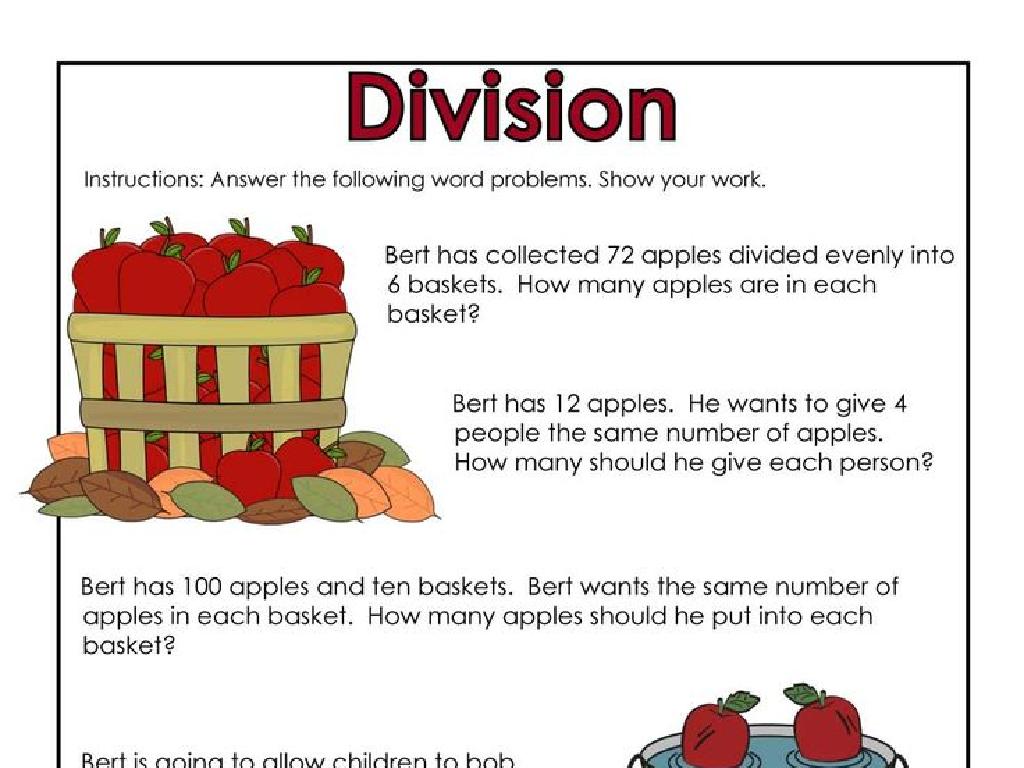Create Line Graphs
Subject: Math
Grade: Eighth grade
Topic: Two-Variable Statistics
Please LOG IN to download the presentation. Access is available to registered users only.
View More Content
Understanding Line Graphs in Statistics
– Statistics: A mathematical study
– Variables: Types and roles
– Independent and dependent variables in experiments
– Line graphs: Visualizing data
– Connect data points to show trends over time
– Today’s focus: Creating line graphs
– We’ll learn how to plot and interpret line graphs
|
This slide introduces the concept of statistics as a branch of mathematics used to collect, analyze, interpret, and present data. Emphasize the role of variables, which are characteristics or quantities that can be measured and controlled. In the context of statistics, understanding variables is crucial for analyzing data correctly. Line graphs are a powerful tool for visualizing data, particularly to show changes over time. Today’s lesson will focus on teaching students how to create their own line graphs, understanding the x-axis (independent variable) and y-axis (dependent variable), and how to interpret the trends they represent. Ensure students grasp the basics before moving on to plotting their own graphs.
Understanding Line Graphs
– Define a line graph
– A chart that displays information as a series of data points connected by straight lines.
– Appropriate use of line graphs
– Best for showing trends over time or continuous data.
– Real-life line graph examples
– Temperature changes, stock market trends, or tracking daily exercise.
– Practice creating line graphs
|
A line graph is a type of chart used to visualize the relationship between two variables, typically with one being dependent on the other over a continuous interval. It’s particularly useful for displaying data trends over time, such as temperature changes throughout a month or stock market fluctuations. Provide students with real-life examples where line graphs are used, such as in weather forecasting or financial analysis. Encourage students to think of other scenarios where a line graph could be helpful. The practice activity should involve students creating their own line graphs using data relevant to their interests, such as sports statistics or their own academic progress over time. This will help them understand the practical application of line graphs in everyday life.
Plotting Points on a Line Graph
– Understanding the coordinate system
– The coordinate system has a horizontal X-axis and a vertical Y-axis.
– Plotting points with two variables
– Each point is defined by an (x, y) pair, showing its position on the graph.
– Practice example: plotting points
– Use the example (3, 4) to plot a point where x is 3 and y is 4 on the graph.
– Interpreting the graph
|
This slide introduces students to the basics of the coordinate system, which is foundational for creating line graphs. Start by explaining the X-axis and Y-axis, and how they intersect at the origin (0,0). Demonstrate how to plot points using two variables, where each variable corresponds to a position on one of the axes. Provide a practice example, such as plotting the point (3, 4), and guide students through the process. Finally, discuss how to interpret the graph once points are plotted, emphasizing the relationship between the variables. Encourage students to practice with additional examples and to ask questions if they need clarification.
Creating Line Graphs: Drawing Lines
– Connect the dots in order
– Learn about the slope
– Slope indicates the steepness and direction of a line
– Activity: Plot and draw lines
– Use graph paper to plot points and connect them with a straight edge
– Discuss line graph features
– Understand how lines represent data trends and relationships
|
This slide introduces students to the process of creating line graphs by connecting points on a graph to form a line. Emphasize the importance of plotting points accurately and in the correct order. Introduce the concept of slope as a measure of how steep a line is and its direction. The class activity involves students plotting given points on graph paper and using a ruler to draw lines through them, ensuring they understand the practical application of the concepts taught. Discuss the significance of line graphs in representing data trends and relationships clearly. Encourage students to observe how the slope of the line graph provides information about the rate of change between the two variables.
Interpreting Line Graphs
– Understanding the slope
– Slope indicates the rate of change between variables
– Identifying data trends
– Trends show the direction of data over time
– Analyzing stock market graphs
– Daily stock prices plotted over time show upward or downward trends
– Drawing conclusions from graphs
|
This slide aims to teach students how to interpret line graphs by understanding the concept of slope and identifying trends within data sets. The slope of a line graph is a measure of how much one variable changes in relation to another and is key to understanding the relationship between the two. Students should learn to look for overall trends such as increases, decreases, or constants over time. Using real-world examples, such as stock market trends, can help students grasp the practical application of line graphs. They can see how daily changes in stock prices can be represented on a graph, making it easier to identify periods of growth or decline. Encourage students to practice by creating their own line graphs from given data and interpreting the results.
Creating Your Own Line Graph
– Select a relevant topic
– Choose a topic that interests you and is measurable
– Gather data for variables
– Record consistent data for the variables you’re comparing
– Steps to craft a line graph
– Plot your data on a graph with labeled axes and connect the points
– Interpret your line graph
– Analyze the trends and patterns your graph reveals
|
This slide is aimed at guiding students through the process of creating a line graph. Start by selecting a topic that can be quantified, such as daily temperatures over a week. Students should then collect reliable data for the variables they want to compare. The next step is to create the graph: label the x and y-axes, plot the data points, and connect them with a line. Finally, students should look at their graph to interpret what the data shows. For example, they might observe that temperatures rise midweek. Encourage students to think critically about what their data might mean and how it can be presented clearly to others.
Class Activity: Line Graph Challenge
– Pair up and pick a topic
– Collect data together
– Create a line graph
– Use graph paper or software to plot points and draw lines
– Present and explain your graph
– Discuss the trend your graph shows
|
This activity is designed to provide hands-on experience with line graphs. Students should work in pairs to choose a topic of interest, such as daily temperatures, class test scores, or hours of daylight over a week. They will then collect relevant data and use it to create a line graph. Encourage them to pay attention to the scale and intervals on their graph. Once completed, each pair will present their graph to the class and explain the trend their data shows. This will help them understand how line graphs can be used to visualize data changes over time. Possible activities for different pairs could include tracking sports team scores, monitoring plant growth with different fertilizers, or comparing daily foot traffic in different school areas.
Wrapping Up: Line Graphs & Questions
– Recap of line graph lesson
– Open floor for questions
– Homework assignment
– Find a news article with a line graph, summarize the trend
– Discuss article trends in class
– Be ready to discuss how the line graph illustrates the article’s trend
|
As we conclude today’s lesson on line graphs, take a moment to review the key points covered. Ensure students understand the purpose of line graphs in representing data over time and how to interpret them. Open the floor for any questions the students may have, providing clarification where needed. For homework, students are tasked with finding a news article that includes a line graph and writing a summary of the trend it shows. This will help them apply their knowledge in a real-world context and prepare them for a discussion in the next class. Encourage students to look for articles in areas that interest them to make the activity more engaging.






